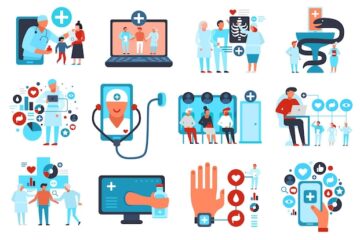
Radueg, a Denver event producer who has had similar issues with her EpiPen prescription, luckily had a sympathetic doctor who was able to find her a alternative, Symbicort, for only $25 per inhaler. But she said she’d prefer some advance warning of how much drugs will cost so she isn’t scrambling to obtain vital medications.
“As a consumer, to be able to know what you’re getting and why, to shop around on the spot, that would be ideal,” Radueg said. “No one wants to just get that (surprise) bill.”
For many patients such as Radueg, especially those with high-deductible insurance plans, the price of filling a prescription is largely unknown until they get to the pharmacy. That can leave some patients shocked at the register, sometimes unable or unwilling to pay. That’s not good for patients or for healthcare. When people don’t take their drugs or take less than the prescribed dose, the result can be disastrous.
Patients aren’t the only ones in the dark about drug prices. Doctors are largely unaware of copays although they may have an idea of the cash price. But variation in insurance coverage is far too wide for them to have reliable, accurate information for each patient, experts say.
A number of insurers, pharmacy benefit managers and technology companies are developing smartphone and computer apps to provide that information for patients and physicians. They provide coverage information before patients reach the pharmacy, inform patients where their prescription can be filled at the lowest cost, and offer alternatives that may be cheaper.
The goal is to cut down on cost-driven noncompliance.
According to the 2013 National Health Interview Survey by the U.S. Centers for Disease Control and Prevention, to save money nearly 7.8% of U.S. adults did not take their medication as prescribed, 15.1% of respondents asked their doctor for a lower-cost medication, 4.2% chose to use an alternative therapy and 1.6% bought the prescriptions abroad.
A 2015 Kaiser Family Foundation study found that 24% patients reported not filling a prescription in the past year because of cost. Nineteen percent reported cutting pills in half or skipping a dose because of cost.
The apps, which offer patients cost information, can save time and prevent uncomfortable interactions at physician offices and pharmacies. Clinicians often spend a significant amount of time discussing insurance coverage and changing their patients’ prescriptions.
Minnetonka, Minn.-based insurer UnitedHealthcare has tackled this problem with its ScriptHub Plus app, which it is using in a pilot project at WestMed Medical Group, a 300-doctor multispecialty group headquartered in Purchase, N.Y. When a physician has prescribed a medication, the app offers the price for the drug under the patient’s insurance plan at the location requested. It also offers other options, including mail-order, drug information and potentially cheaper alternatives the patient can discuss with the doctor.
ScriptHub Plus doesn’t stop the electronic ordering process while patients consider options. And, in its current iteration, it doesn’t make pricing data available to physicians in the electronic health record. But UnitedHealthcare officials say they are working to add that.
The hope with ScriptHub Plus is that patients can have a conversation with their doctors about price before leaving the office. If they’re unhappy then, a new prescription can be written on the spot, avoiding the back-and-forth conversations that can come from patients who need to change prescriptions over the phone with nursing staff or pharmacies.
A spokesman for the insurer said the app is still early in development. It hasn’t announced if it will make the app available to more UnitedHealthcare members.
Other vendors are looking to supply this information to the physician rather than the patient. CVS Health, the Woonsocket, R.I.-based drugstore and PBM giant, and Arlington, Va.-based Surescripts, which operates the network in which prescription orders are exchanged, are in the early stages of piloting a feature that would give physicians patient-specific benefit and cost information in the point-of-care EHR. A Surescripts spokesperson said the feature aims to reduce the administrative callbacks for doctors and pharmacists.
“Ultimately, the goal is to be able to leverage the key findings of this pilot and others to develop transaction standards across the industry,” a CVS spokeswoman said, adding that members of CVS Caremark, the company’s PBM arm, already have the ability to check and compare drug prices online and on a mobile app.
The apps reflect an ongoing effort to streamline the physician office and free doctors of administrative tasks, said Dave Gans, senior industry affairs fellow at the Medical Group Management Association, a physician practices trade group. The goal is to help them spend more time doing their main job: caring for patients.

The ScriptHub Plus app alerts a customer when a physician has prescribed a medication and offers the price for the drug under their insurance plan at the location requested, as well as cheaper alternatives.
A 2009 study from the MGMA estimated that physicians spend 1.3 hours a week and the nursing staff in a physician’s office spends 3.6 hours a week for each physician in an office sorting out formulary issues with insurers for patients. That doesn’t include the countless hours physicians and staff spend discussing these issues with patients, who often are left to call back the doctor to figure out an alternative prescription. That doesn’t always happen in one phone call, either.
Dr. Arthur Forni, chief medical officer at WestMed, said the 300-provider group enters about 75,000 electronic prescription orders a month, with the average provider writing 11 prescriptions a day. Even if 5% of those require a phone call, that could be a serious drag on physician time, taking doctors away from patient care, he said.
“That’s productive time being wasted, where you would think we could get it right the first time a lot quicker,” Forni said, noting that many of the tasks could be automated. He’s hoping ScriptHub Plus, being piloted in his office, will offer his patients better information and reduce callbacks to change prescriptions.
Startups such as Blink Health and GoodRx say they offer savings on drugs through online ordering and coupons, and a plethora of websites offer price estimates and cash prices. But few vendors have been able to offer an exact, definitive price under a customer’s insurance plan.
Castlight Health, the San Francisco-based health information technology company that offers price transparency and cost management tools to employers, offers personalized price estimates to a firm’s employees based on their insurance and historical claims data provided by their PBMs.
Historically, the pharmacy data network has not been built to offer real-time, definitive pricing information, said Keith Jacobs, president of Refillwise, a prescription discount card company. With the exception of PBMs and third-party administrators, it’s been nearly impossible to learn how much a drug will cost until the insurance card is processed at the pharmacy register.
Refillwise, which has 1 million active members, is working on an app that would tell patients about drug pricing under their insurance plan. Right now, the app uses an algorithm to offer customers a price estimate based on similar patients. “This concept is really important to us,” Jacobs said. “Offering our members a price before they arrive at the pharmacy is a priority, and we’re working on a product.”
UnitedHealthcare—whose parent company owns OptumRx, one of the nation’s largest PBMs—has emphasized that the ScriptHub Plus app is designed to ensure medication adherence. When patients fail to take medicines, insurers can get hit with additional costs.
“At the end of the day, we—both the PBM and the insurance company—want the patient to take their medication as prescribed,” said Cheryl Lejbolle, senior director of innovation at UnitedHealthcare. “Cost has been one concern of patients that has been brought up. If we can provide affordable (prices), and they take it, then we’re all better off.”




